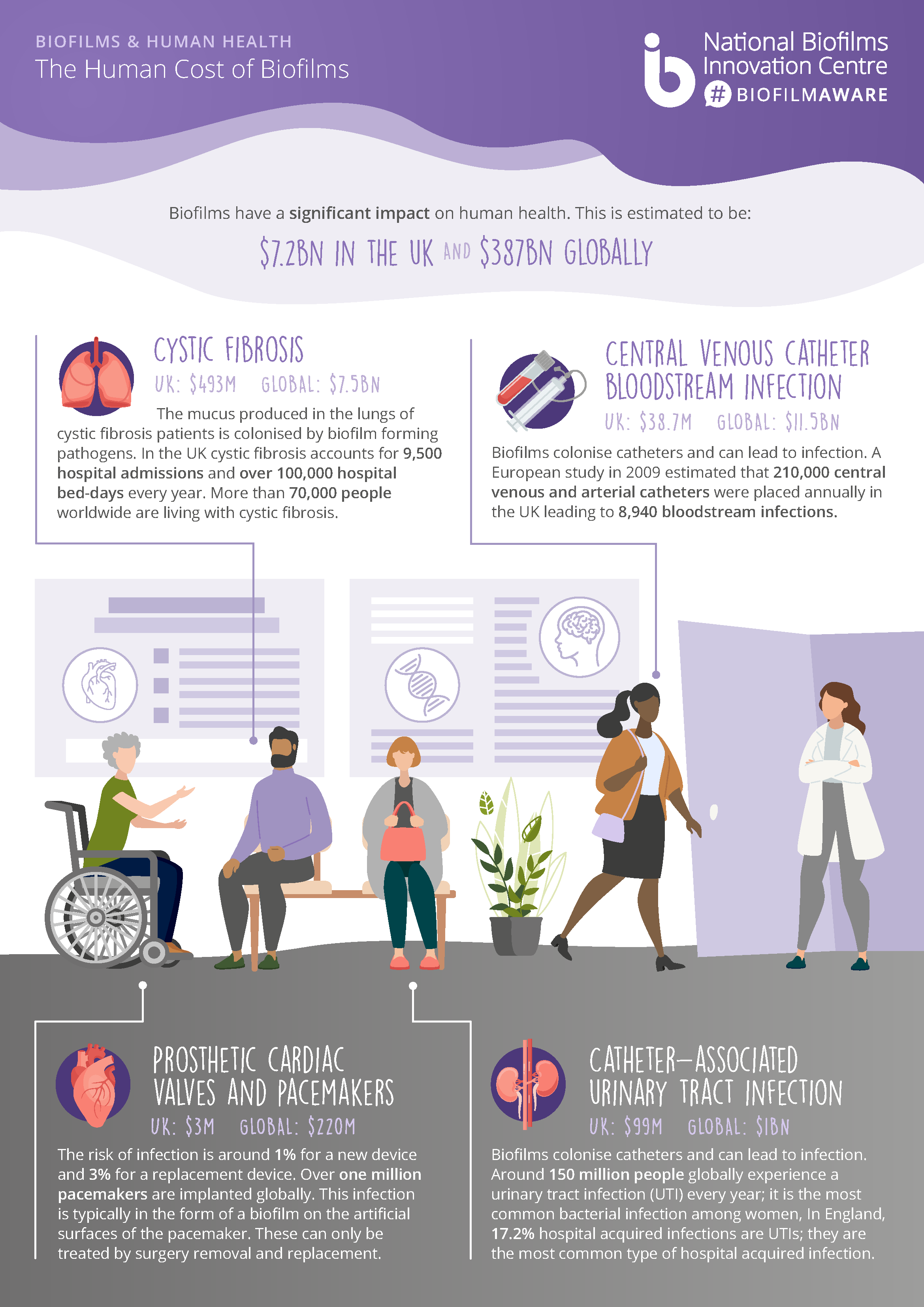Biofilms in the Healthcare Sector
Biofilms within the healthcare sector have been extensively studied. The majority of microbial infections that patients experience are due to biofilms. Many of these biofilm related infections are chronic, displaying resistance to antimicrobial treatments. Unfortunately, this means that some patients must undergo surgery to try and resolve their infection.
Cystic Fibrosis
Biofilms have a significant impact on patients who suffer from cystic fibrosis – a condition which causes mucus to accumulate within the lungs and gastrointestinal tract. It is estimated that 105,000 people have been diagnosed with cystic fibrosis worldwide. Biofilms in the cystic fibrosis lung are very resilient to antibiotic treatment and can therefore cause chronic infections for cystic fibrosis patients. Biofilms are a major contributor to the overall economic impact of cystic fibrosis, which globally is valued at $7.5 billion per year (PHS Consulting Ltd).
Endocarditis
Endocarditis is an infection of the heart which can be life threatening if not treated promptly. It is normally caused by bacteria, however in some cases fungi can be responsible for causing endocarditis. Biofilms play a major role in the development of this infection, impeding the actions of the immune system and antibiotics to effectively clear the biofilm. The rate of endocarditis is increasing, and is estimated to have a global economic impact worth $16 billion per year (PHS Consulting Ltd).
Chronic sinusitis/rhinosinusitis
Chronic sinusitis, also referred to as chronic rhinosinusitis is the inflammation of the sinuses and nasal passage. It can result from a variety of factors, such as a bacterial biofilm infection. In 2019 the economic impact of chronic sinusitis globally was valued at $24.4 billion (PHS Consulting Ltd).

Catheter associated infections
Biofilms are a persistent problem in catheter-associated infections. For central venous catheters which are inserted into veins, infection normally occurs when bacteria travel along the catheters surface, bypass the patient’s skin and enter the bloodstream. Infections caused by central venous catheters have been estimated to cost $11.5 billion globally (PHS Consulting Ltd). Biofilms can also form on urinary catheters and are responsible for many urinary tract infections. Urinary tract infections are very common with 150 million people normally experiencing them each year.
Ophthalmology
Biofilms can be responsible for causing infections in the eyes and eyelids. One of the most common infections associated with the eye is keratitis, which causes inflammation of the cornea and is more prevalent in individuals who wear contact lenses. Globally, eye conditions related to biofilms is estimated to cost $759.5 million (PHS Consulting Ltd).
Endotracheal tubes
Endotracheal tubes which are used for patients on ventilators are prone to bacterial colonisation and biofilm formation. Around half of these biofilms can cause patients to contract ventilator-associated pneumonia when antibiotics are unable to clear the infection.
Prosthetic joints
Prosthetic joints provide surfaces for bacterial colonisation and biofilm formation. After a prosthetic joint is inserted, biofilms present on the surface of the joint can cause infections. These infections do not only occur after surgery but can sometimes establish years after the surgery has been completed. In many cases these infections cannot be successfully treated with antibiotics, with surgical replacement or treatment often being required.
PHS Consulting Ltd. Quantification of Market Sectors Engaging With Biofilm Technologies. (PHS Consulting Ltd, 2021).
NBIC Expertise in the Healthcare Sector
Many NBIC research partners possess significant levels of skill, extensive experience and capability in addressing complex biofilm-related healthcare issues.
Join Our Community
Join us in our mission to tackle and catalyse innovation in biofilms.




